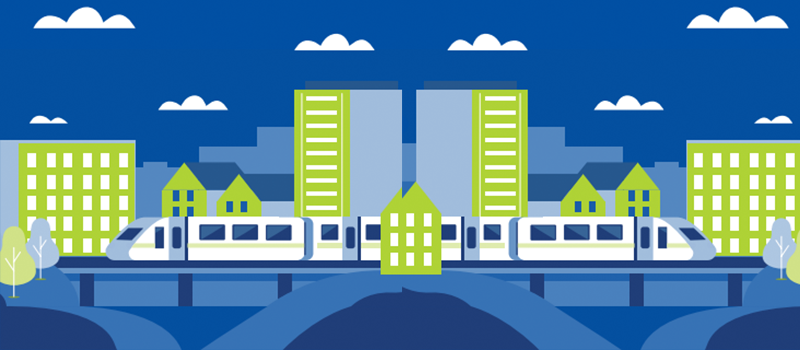Even before the pandemic hit, public transit agencies were going through a rough patch. Ridership was down, thanks to major competition from ridesharing services. Low ridership, coupled with government shortfalls, caused many transit agencies to experience significant financial deficits. This, in turn, meant less money for important infrastructure, maintenance and modernization work, from railways to city buses.
At the same time, customer satisfaction was trending downward as riders who were used to more instant, digitized experiences in other areas of their lives wanted the same capabilities for transportation.
Transit agency officials understood that these challenges require changes, and many are well on their way toward improving them by addressing service gaps, running service outside of traditional commute hours, rerouting transportation networks to address changing priorities, providing more functional mobile apps and increasing efficiency by adding bus-only lanes and prioritizing transit signals.
When the pandemic began and ridership plunged, transit agencies that were further along than others in attacking these issues had a head start. But new, more challenging issues arose: Stations and rail cars, buses and other modes of public transit had to adhere to stringent sanitization guidelines, enforce mask guidance and ensure that fewer riders could ride together in the same compartment.
To tackle these issues effectively, public transit agencies must complete what they started. That means implementing fully touchless ridership from the moment a rider enters a rail station or bus stop to when they exit that station, along with metrics to determine how many riders should be in each compartment and how many additional rail cars or buses to add.
But in many cases, agencies have been hindered by their reliance on outmoded systems that lack the flexibility and scalability to support these changes.
A Case Study for Positive Change
San Francisco’s Bay Area Transit System (BART) has come a long way since it opened in 1972 with 12 stations, 28 miles of tracks and a weekly ridership of about 100,000. Today, the 131-mile, 50-station system carries many times that number of passengers and intersects with countless metro stations and light rail.
To improve system performance and simplify management, system leaders started a major modernization project in 2012, modernizing all finance, HR and maintenance systems. BART then moved on to a major cloud project, implementing a Nutanix enterprise private cloud solution for all of its enterprise workloads, including mission-critical maintenance software and its work order system.
Nutanix’s enterprise hybrid cloud platform helps organizations make better use of the cloud, mature their digital services and improve cybersecurity. The solution also powers BART’s Oracle-based HR, finance and mission-critical maintenance systems and delivers on-demand compute.
Modernizing its infrastructure proved to be a fortuitous move for BART, which has gone on to use modern technology to help respond to COVID-19 throughout the system.
For example, these capabilities have helped BART measure and analyze face mask covering compliance data, develop weekly crowding charts with passenger loading data detailing the average number of riders on each car of a specific train and report on air flow in train cars. During the past year, BART also has been working on standardizing touchless tickets and parking throughout the system, and expanding parking payment options through its mobile app.
This article is an excerpt from our recent report, “Driving Positive Changes in Public Transit with a Robust IT Infrastructure.” Download the full report here.





Leave a Reply
You must be logged in to post a comment.